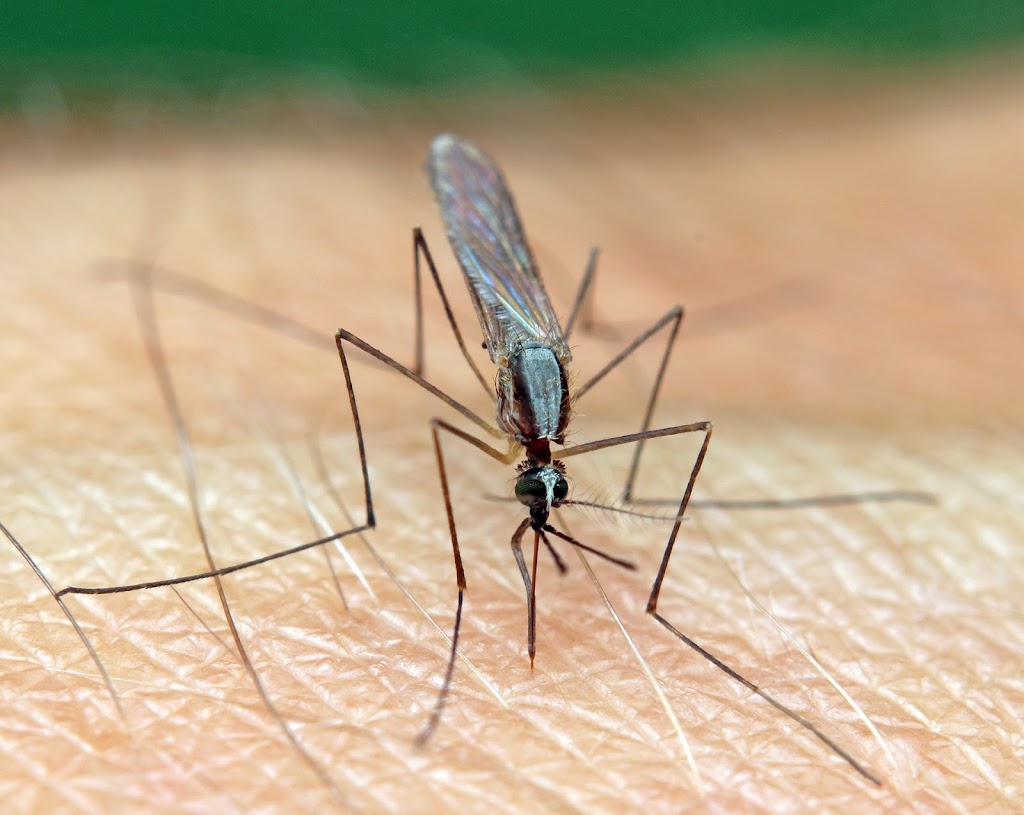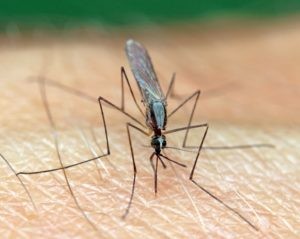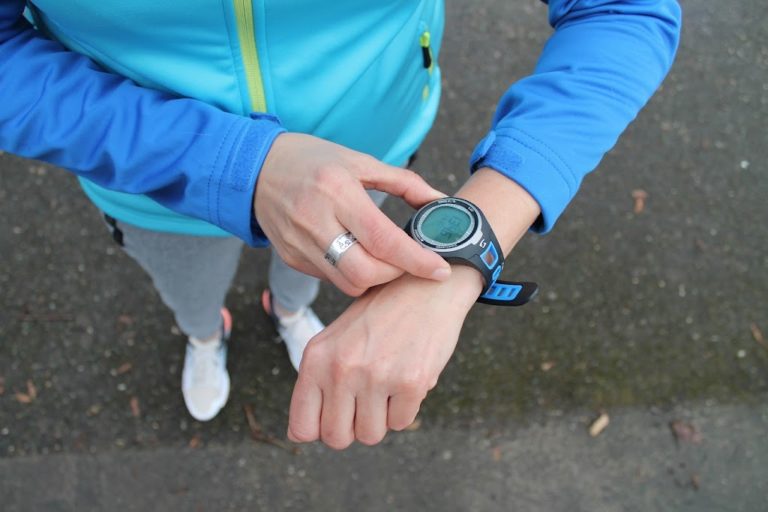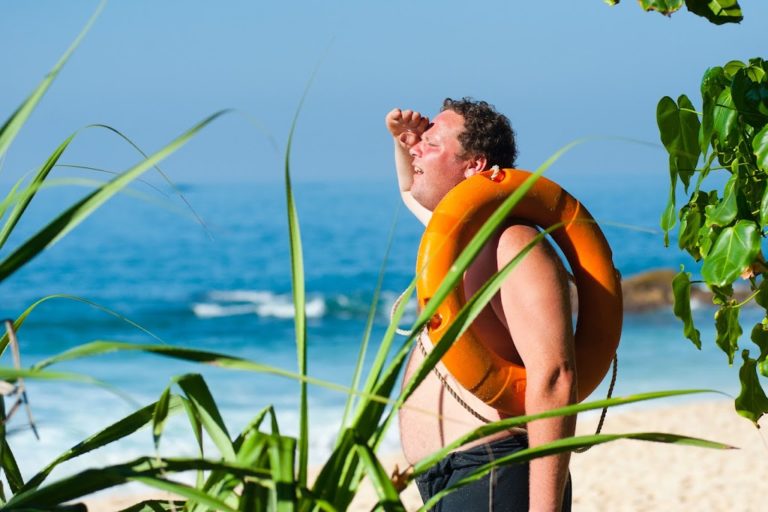Nature is a magnificent playground teeming with insects and animals, each playing a vital role in the ecosystem. While many of these creatures are harmless or even beneficial, it’s important to be aware of potential risks and know how to protect yourself from bites and stings. This complete comprehensive guide will provide you with full knowledge to navigate the world of insects, animals, and bites, ensuring your safety during outdoor adventures.
Tip1) Identification:
Identification is an essential skill when it comes to insects and animals. Familiarizing yourself with the different types of species in your area allows you to assess potential risks, take appropriate precautions, and make informed decisions. Here’s why identification is important and how you can go about it:
Risk Assessment:
By identifying insects and animals, you can determine if they pose any risks or potential dangers. Some species may be venomous, aggressive, or carry diseases, while others may be harmless or even beneficial. Knowing which species are prevalent in your area helps you understand the potential hazards associated with them.
Safety Precautions:
Once you can identify different insects and animals, you can take appropriate safety precautions. For example, if you know that certain insects are attracted to bright colors, you can avoid wearing vibrant clothing when venturing into their habitats. Identifying venomous snakes in your area allows you to be cautious and take appropriate steps to avoid encounters.
Habitat Awareness:
Identification helps you become more aware of the habitats and environments where certain insects and animals thrive. This knowledge enables you to be prepared when visiting or exploring specific areas, such as forests, wetlands, or grasslands. Understanding the natural habitats of different species enhances your overall safety and enjoyment.
Responsible Interaction:
Identifying insects and animals also promotes responsible interaction. You can learn about their behavior, feeding habits, and breeding patterns, allowing you to observe them without causing harm or disturbance. This knowledge helps protect both the wildlife and yourself.
Conservation Efforts:
Identification plays a role in conservation efforts as well. By recognizing and documenting different species, you can contribute to citizen science projects or local biodiversity surveys. This information aids in monitoring population trends, understanding ecological dynamics, and implementing conservation measures.
How to Identify Insects and Animals:
Field Guides:
Utilize field guides specific to your region or consult reputable online resources. These resources provide detailed descriptions, photographs, and information about the characteristics, habitats, and behaviors of various species.
Local Experts:
Seek guidance from local experts, such as naturalists, park rangers, or wildlife organizations. They possess firsthand knowledge of the fauna in your area and can provide valuable insights and identification assistance.
Online Communities:
Join online communities or forums dedicated to insect and animal identification. Share photographs or descriptions of the species you are trying to identify, and fellow enthusiasts or experts can help with the identification process.
Apps and Websites:
Explore smartphone apps and websites that offer species identification tools. These platforms often use image recognition technology or provide interactive identification keys to assist in identifying insects and animals.
Participate in Workshops or Guided Tours:
Attend workshops or join guided tours that focus on wildlife identification. These experiences allow you to learn directly from experts and enhance your skills in recognizing different species.
Remember, while identification is valuable, it is important to prioritize personal safety and respect the well-being of insects and animals. Avoid touching or handling unfamiliar species, especially if you are unsure of their potential risks. By being knowledgeable about the local fauna, you can foster a deeper connection with the natural world and make informed decisions when encountering different insects and animals.
Tip 2) Venomous Species:
Venomous species are insects and animals that possess venom, a substance that can cause harm or even death if injected into the bloodstream. It’s important to be aware of venomous species in your region to prevent dangerous encounters and take appropriate precautions. Here’s why understanding venomous species is essential and how you can learn to recognize them:
Risk Assessment:
Knowledge of venomous species allows you to assess potential risks in your environment. By understanding which insects and animals in your region are venomous, you can take appropriate measures to avoid them or minimize the risk of encounters. This knowledge helps you make informed decisions and stay safe.
Preventive Measures:
Recognizing venomous species enables you to take preventive measures to reduce the chances of bites or stings. For example, if you know that certain snakes in your area are venomous, you can be more cautious when hiking or camping, wear appropriate footwear, and avoid reaching into crevices or hiding spots where they may reside.
First Aid Preparedness:
Familiarity with venomous species helps you be prepared for potential bites or stings. Knowing which species are venomous allows you to learn about their typical effects and understand the appropriate first aid measures to take in case of an encounter. Prompt and correct first aid can make a significant difference in minimizing the severity of the envenomation.
Avoiding Provocation:
Recognizing venomous species helps you understand their behavior and avoid provoking them. Venomous animals may become defensive or aggressive if they feel threatened, increasing the risk of a bite or sting. Being able to identify venomous species allows you to keep a safe distance and respect their space.
How to Recognize Venomous Species:
Research:
Conduct thorough research to identify the venomous species present in your region. Local wildlife guides, online resources, or consulting with local experts can provide valuable information on the venomous insects and animals in your area.
Characteristics:
Learn to recognize the physical characteristics or markings that distinguish venomous species. For example, venomous snakes often have triangular heads, heat-sensing pits, or distinctive color patterns. Spiders may have specific body markings or leg arrangements that can help with identification.
Behavior:
Understand the typical behavior of venomous species. Some venomous animals may exhibit aggressive postures, warning displays, or defensive behaviors when threatened. Learning about their behavior helps you recognize potential signs of danger and take appropriate action.
Educational Programs:
Participate in educational programs or workshops conducted by wildlife organizations or nature centers. These programs often provide hands-on experiences, allowing you to observe and learn about venomous species from knowledgeable experts.
Visual Resources:
Utilize visual resources such as books, online photo galleries, or smartphone apps that showcase images and descriptions of venomous species. These resources can assist in familiarizing yourself with their appearance and characteristics.
Always remember that venomous species should be observed from a safe distance and left undisturbed. If you encounter a venomous species or suspect a bite or sting from a venomous creature, seek immediate medical assistance. Medical professionals are trained to provide appropriate treatment and care in such situations.
By understanding venomous species, you can assess risks, take preventive measures, and respond effectively in case of an encounter. Stay informed, exercise caution, and prioritize your safety when venturing into areas where venomous species may be present.
Tip 3) Allergies:
Allergies are immune system reactions that occur when the body’s immune system overreacts to certain substances. When it comes to insect bites or animal encounters, some individuals may be at risk of experiencing severe allergic reactions. It’s important to be aware of any allergies you or your companions may have and take appropriate precautions. Here’s why understanding allergies is crucial and how you can prepare:
Allergic Reactions:
Allergic reactions to insect bites or animal encounters can range from mild to severe. Common symptoms include redness, swelling, itching, and pain at the site of the bite or sting. However, some individuals may experience more severe symptoms, such as difficulty breathing, hives, dizziness, or swelling of the face, lips, or throat. These severe allergic reactions, known as anaphylaxis, require immediate medical attention as they can be life-threatening.
Consult a Healthcare Professional:
If you or your companions have a history of allergies or suspect an allergy to insect bites or animal encounters, it’s essential to consult a healthcare professional. They can evaluate your specific situation, conduct allergy testing if necessary, and determine the appropriate course of action.
Epinephrine Auto-Injector:
Depending on the severity of your allergies, a healthcare professional may recommend carrying an epinephrine auto-injector, such as an EpiPen. An auto-injector delivers a dose of epinephrine, a medication that helps reverse the symptoms of an allergic reaction and provides temporary relief until further medical assistance can be obtained. If prescribed, ensure that you and your companions are trained on how to properly use the auto-injector.
Precautions and Avoidance:
While carrying an epinephrine auto-injector can be life-saving, it’s important to take precautions and try to avoid triggering allergens whenever possible. For example, if you know you have a severe allergy to bee stings, take measures to avoid bee-filled areas, wear protective clothing, and remain calm and still if a bee is near you. Knowing your allergies allows you to be proactive in minimizing exposure to potential triggers.
Communication:
When participating in outdoor activities with others, inform them about any known allergies you or your companions have. This ensures that everyone is aware and can take appropriate actions in case of an allergic reaction. Encourage open communication and educate others on the signs and symptoms of allergic reactions.
Emergency Action Plan:
Develop an emergency action plan in case of an allergic reaction. This plan should include steps to take, such as using the epinephrine auto-injector, seeking immediate medical assistance, and notifying emergency services. Share the plan with your companions and ensure that they are familiar with the steps to follow.
By being aware of allergies and taking necessary precautions, you can reduce the risk of severe allergic reactions during insect bites or animal encounters. Remember to consult a healthcare professional for personalized advice and to obtain any required medications or auto-injectors. Stay vigilant, carry necessary medications, and be prepared to respond swiftly in case of an allergic reaction.
Tip 4) Disease Transmission:
Disease transmission refers to the process by which diseases are spread from one organism to another. In the context of insects, certain species like mosquitoes and ticks can act as vectors, carrying and transmitting diseases to humans and animals. Understanding the risks associated with disease transmission and taking preventive measures is crucial for safeguarding your health. Here’s why disease transmission awareness is important and how you can protect yourself:
Disease Risks:
Insects like mosquitoes can transmit diseases such as West Nile virus, dengue fever, malaria, Zika virus, and Chikungunya. Ticks, on the other hand, are known carriers of Lyme disease, Rocky Mountain spotted fever, and other tick-borne illnesses. Knowing the prevalent diseases in your area allows you to assess the risks and take appropriate preventive measures.
Protective Clothing:
When venturing into insect-prone areas, wearing protective clothing is key. Cover your skin as much as possible with long sleeves, pants, socks, and closed-toe shoes. This reduces the exposed areas vulnerable to bites and decreases the likelihood of disease transmission.
Insect Repellents:
Use insect repellents containing ingredients like DEET or picaridin to ward off mosquitoes, ticks, and other biting insects. Apply them according to the instructions provided and reapply as necessary, especially after sweating or swimming. Insect repellents act as a deterrent, reducing the chances of insect bites and potential disease transmission.
Environmental Modifications:
Reduce the presence of disease-carrying insects around your home by eliminating standing water where mosquitoes breed. Regularly check and remove debris or stagnant water from containers, gutters, flowerpots, or any other potential breeding sites.
Vaccinations:
Some diseases, such as Lyme disease or tick-borne encephalitis, have available vaccines. Consult with healthcare professionals to determine if vaccinations are recommended based on your location and activities.
Tick Checks:
After spending time in areas where ticks may be present, perform thorough tick checks on yourself, your family members, and pets. Pay close attention to hidden areas such as the scalp, behind the ears, underarms, groin, and back of the knees. Prompt removal of ticks can reduce the risk of disease transmission.
Education and Awareness:
Stay informed about the diseases prevalent in your area, their symptoms, and preventive measures. Government health agencies, local health departments, or reputable online sources can provide up-to-date information on disease transmission risks specific to your region.
Prompt Medical Attention:
If you experience symptoms such as fever, rash, joint pain, or flu-like symptoms after a potential insect bite, seek medical attention promptly. Early diagnosis and treatment can help prevent complications and mitigate the effects of diseases transmitted by insects.
Remember, disease transmission through insects can vary by geographic region and season. Stay informed about the risks in your specific area and take preventive measures accordingly. By understanding the diseases transmitted by insects and implementing preventive strategies, you can minimize the chances of infection and protect your well-being.
Tip 5) First Aid:
First aid refers to the immediate care provided to an injured or ill person before professional medical help arrives. Learning basic first aid techniques for insect bites and animal encounters is important as it allows you to provide initial care, alleviate pain, and prevent further complications. Here are some essential first aid tips to keep in mind:
Assess the Situation:
Before providing first aid, ensure the scene is safe for both yourself and the injured person. If there is ongoing danger, such as an aggressive animal nearby, move to a safe location before administering any aid.
Clean the Wound:
For insect bites or animal scratches, gently clean the affected area with mild soap and water to remove dirt, bacteria, or venom that may be present. This helps reduce the risk of infection. Use a clean cloth or sterile gauze to pat the area dry.
Control Bleeding:
If there is bleeding from a bite or scratch, apply gentle pressure using a clean cloth or sterile dressing. Elevating the wound, if possible, can also help reduce bleeding. If the bleeding is severe or doesn’t stop after applying pressure for several minutes, seek medical assistance.
Apply Cold Compress:
To reduce pain, swelling, and inflammation associated with insect bites or animal encounters, apply a cold compress or ice pack wrapped in a cloth to the affected area. Keep the compress in place for about 10-15 minutes at a time, with breaks in between.
Pain Relief:
Over-the-counter pain relievers, such as acetaminophen or ibuprofen, can help alleviate pain and discomfort. Follow the recommended dosage instructions and consult a healthcare professional if you have any concerns or if the person is allergic to certain medications.
Ointments and Creams:
For minor insect bites or scratches, apply an over-the-counter antiseptic cream or ointment to help prevent infection. Consult a pharmacist or healthcare professional for specific recommendations based on the type of wound and individual circumstances.
Tetanus Shot:
Depending on the nature and severity of the wound, a tetanus shot may be necessary. Tetanus is a bacterial infection that can enter the body through cuts or puncture wounds. Consult a healthcare professional to determine if a tetanus shot is required based on the circumstances and the person’s vaccination history.
Seek Medical Attention:
In some cases, professional medical assistance may be necessary. Seek medical attention if the bite or scratch is deep, shows signs of infection (e.g., increasing redness, swelling, pus), or if the person develops severe symptoms like difficulty breathing or an allergic reaction.
Remember, first aid is not a substitute for professional medical care. It is crucial to seek medical attention for serious bites or injuries, as well as for any signs of severe allergic reactions or worsening symptoms. By learning basic first aid techniques, you can provide initial care and support until professional help is available.
Tip 6) Protective Clothing:
Protective clothing plays a crucial role in safeguarding individuals from insect bites and stings when venturing into insect-prone areas. By covering the skin as much as possible with appropriate clothing, you can reduce the exposed areas vulnerable to bites and stings, minimizing the risk of encountering harmful insects or experiencing adverse reactions. Here are some key points to consider when using protective clothing in insect-prone areas:
Long Sleeves:
Wear shirts or tops with long sleeves to provide coverage for your arms. Opt for lightweight, breathable fabrics to stay comfortable in warm weather.
Pants:
Choose long pants that cover your legs completely. Tuck the pant legs into your socks or boots for added protection against insects crawling up your legs.
Socks:
Wear socks that are long enough to cover your ankles. This prevents insects from accessing your skin through the gaps between your pants and footwear.
Closed-Toe Shoes:
Select closed-toe shoes or boots to protect your feet from bites and stings. This also prevents insects from crawling inside your shoes.
Light Colors:
Light-colored clothing may help deter certain insects, as they are less attracted to lighter hues. Consider wearing light-colored garments to potentially reduce the likelihood of insect encounters.
Avoid Loose Clothing:
Opt for well-fitting clothing, as loose garments can provide entry points for insects. Tighten cuffs, collars, and waistbands to minimize gaps.
Consider Insect-Repellent Clothing:
Some clothing items are treated with insect repellents, such as permethrin. These garments provide an additional layer of protection against insect bites and stings.
Use Hats:
Wear hats with wide brims to shield your face, neck, and ears from insect activity. Additionally, consider wearing hats made of insect-repellent fabric for added protection.
Remember, while protective clothing can significantly reduce the risk of insect bites and stings, it is important to use other preventive measures in conjunction with it. These measures may include applying insect repellents to exposed skin, avoiding peak insect activity times, and staying away from known insect nesting areas or habitats.
By properly utilizing protective clothing and adopting other preventive measures, you can enjoy outdoor activities with reduced concerns about insect bites and stings, allowing for a more enjoyable and safer experience.
Tip 7) Insect Repellents:
Insect repellents are products specifically designed to deter and repel insects, such as mosquitoes, ticks, flies, and other biting or stinging insects. They contain active ingredients that create a barrier on the skin, making it less attractive to insects and reducing the likelihood of bites or stings. Here are some key points to know about using insect repellents effectively:
Active Ingredients:
Look for repellents that contain effective active ingredients, such as DEET (N,N-diethyl-meta-toluamide) or picaridin (also known as icaridin). These ingredients have been proven to repel a wide range of insects and provide longer-lasting protection.
Protection Range:
Insect repellents vary in their effectiveness and duration of protection. Choose a product with a sufficient protection range for the specific insect species you are likely to encounter and the duration of your outdoor activities. Higher concentrations of active ingredients generally provide longer-lasting protection.
Follow Instructions:
Carefully read and follow the instructions provided on the repellent’s packaging. This includes information on how to apply the product, how often to reapply, and any precautions or warnings.
Application Techniques:
Apply the repellent evenly to exposed skin, ensuring thorough coverage. Pay attention to areas where insects are more likely to land or bite, such as the arms, legs, neck, and ankles. Avoid applying repellents to broken or irritated skin.
Avoid Contact with Eyes and Mouth:
Take care to avoid contact with the eyes, mouth, and other sensitive areas of the face when applying repellents. If accidental contact occurs, rinse the area with water.
Reapplication:
Insect repellents have a limited duration of effectiveness. Reapply them as necessary, following the instructions provided by the manufacturer. Factors such as sweating, swimming, or rubbing with towels may reduce the efficacy of the repellent and require more frequent reapplication.
Children and Pregnant Women:
When using insect repellents on children, choose products specifically formulated for their age group. Avoid applying repellents to the hands of young children to prevent accidental ingestion. Pregnant women should consult their healthcare provider before using insect repellents.
Additional Precautions:
In addition to using repellents, consider other preventive measures, such as wearing protective clothing, staying in well-screened or air-conditioned areas, and avoiding peak mosquito or insect activity times.
It’s important to note that while insect repellents are effective in reducing the risk of insect bites, they may not offer 100% protection. Some insects can still land on treated skin or find other areas to bite. Therefore, it’s advisable to remain vigilant and take additional precautions to minimize exposure to insects, especially in areas known for insect-borne diseases.
By using insect repellents containing DEET or picaridin as directed, you can significantly reduce the chances of being bitten by mosquitoes, ticks, and other biting insects, thereby lowering the risk of insect-borne illnesses.
Tip 8) Proper Food Storage:
Proper food storage is essential when camping or picnicking to prevent attracting wildlife and ensure food safety. By following some key guidelines, you can keep your food securely stored and minimize the risk of unwanted animal encounters. Here’s what you need to know:
Sealed Containers:
Store your food in sturdy, airtight containers that are designed to keep out wildlife. Opt for containers with secure lids or locking mechanisms to prevent animals from accessing the food.
Insulated Coolers:
For perishable items and foods that require refrigeration, use insulated coolers with tight-fitting lids. Make sure to pack the cooler with ice packs or ice to maintain proper temperature control.
Separate Raw and Cooked Foods:
Keep raw meats, poultry, and seafood separate from cooked foods to prevent cross-contamination. Place raw items in leak-proof bags or containers to avoid the spread of bacteria.
Elevated Storage:
If possible, store your food off the ground and away from the reach of animals. Make use of elevated platforms or bear-resistant food storage containers, if available in the camping area, to deter wildlife.
Secure the Lid:
Ensure that the lid of your food storage container or cooler is tightly closed and properly sealed. Animals have a strong sense of smell and can be attracted to even small food odors.
Proper Disposal of Waste:
Dispose of food waste properly by sealing it in sturdy trash bags and placing it in designated trash bins or bear-proof containers. Never leave food scraps or trash exposed at your campsite or picnic area, as it can attract animals.
Keep a Clean Campsite:
Maintain a clean campsite by promptly cleaning up any spills or food remnants. Wipe down surfaces, including picnic tables and cooking areas, to remove food residues and odors.
Be Mindful of Odorous Items:
Some food items, such as strong-smelling snacks, can attract wildlife even when properly stored. Consider minimizing the use of highly aromatic foods or keeping them in double-sealed containers for added protection.
Educate Yourself:
Familiarize yourself with the specific guidelines and recommendations for food storage in the camping or picnic area you’re visiting. Some locations may have specific rules or bear-aware practices that you should follow.
By adhering to proper food storage practices, you can help protect wildlife, maintain a clean and safe campsite, and prevent potential conflicts between humans and animals. Remember, responsible food storage not only ensures your own safety but also contributes to the preservation of natural habitats and the well-being of wildlife.
Tip 9) Respect Wildlife:
Respecting wildlife is essential to maintain the balance of ecosystems and ensure the safety of both humans and animals. When encountering wild animals, it’s important to follow certain guidelines to minimize disturbances and promote the well-being of the wildlife. Here are key points to remember when it comes to respecting wildlife:
Keep a Safe Distance:
Maintain a respectful distance from wild animals. It is important to observe them from afar and avoid getting too close. The specific safe distance will vary depending on the species and the environment, but a general rule is to stay at least 100 feet (30 meters) away from large animals and at least 25 feet (7 meters) away from smaller animals.
Use Binoculars or Zoom Lenses:
To observe wildlife up close without disturbing them, use binoculars or camera equipment with zoom lenses. This allows for detailed observation without intruding on the animal’s personal space.
Avoid Approaching or Provoking Wildlife:
Do not approach, chase, or corner wild animals. This can cause stress, alter their natural behavior, and potentially lead to dangerous situations. Respect their space and allow them to go about their natural activities undisturbed.
Stay on Designated Trails:
Stick to designated trails and paths when exploring natural areas. Venturing off-trail can disrupt animal habitats, damage sensitive vegetation, and increase the risk of unexpected encounters with wildlife.
Do Not Feed Wildlife:
Feeding wild animals can disrupt their natural diet and behavior, create dependency, and encourage aggressive behavior towards humans. It can also expose them to harmful human food or lead to overcrowding in certain areas.
Properly Dispose of Trash:
Dispose of trash and food waste in designated containers to prevent wildlife from scavenging and becoming habituated to human food. This helps to maintain the animals’ natural foraging instincts and reduces the risk of human-wildlife conflicts.
Observe Quietly and Silently:
Keep noise levels low and avoid sudden movements or loud noises when near wildlife. Silence your electronic devices and respect the tranquility of the natural environment to minimize disturbances.
Educate Yourself:
Learn about the native wildlife species in the area you are visiting. Understanding their behavior, habitat needs, and any specific guidelines for interacting with them will help you make informed decisions and foster a greater appreciation for the wildlife you encounter.
Respecting wildlife is crucial for their well-being and the conservation of their habitats. By observing animals from a distance, avoiding disturbances, and behaving responsibly in their presence, we can coexist harmoniously with the natural world and help protect the diverse wildlife species that share our planet.
Tip 10) Outdoor Activities:
Engaging in outdoor activities such as hiking, camping, or other adventures in nature can be incredibly rewarding. However, it’s important to research and understand the potential risks associated with your chosen destination. Being prepared and informed about the environment and conditions you may encounter will help ensure a safe and enjoyable experience. Here are some key points to consider when planning outdoor activities:
Research the Destination:
Before embarking on any outdoor activity, gather information about the location you will be visiting. Learn about the terrain, weather patterns, wildlife, and any specific risks or challenges associated with the area. Online resources, guidebooks, and local park or wilderness offices can provide valuable information.
Understand the Weather:
Check the weather forecast for your destination and be aware of any potential weather changes that may occur during your trip. Dress appropriately and pack gear suitable for the expected conditions. Be prepared for unexpected weather changes by carrying extra layers and rain gear.
Know the Trails and Routes:
If you’ll be hiking or backpacking, familiarize yourself with the trails or routes you plan to take. Obtain maps, trail descriptions, and elevation profiles to understand the distance, difficulty level, and estimated time required. This will help you gauge your physical abilities and plan accordingly.
Assess Fitness and Skill Level:
Consider your own fitness level, experience, and skill set when choosing outdoor activities. Be honest with yourself about your abilities and choose activities that align with your capabilities. Pushing beyond your limits can increase the risk of accidents or injuries.
Pack Essential Gear:
Prepare a checklist of essential gear based on the specific activity and location. This may include appropriate footwear, navigation tools (maps, compass, GPS), first aid kit, headlamp or flashlight, extra clothing layers, food, water, and emergency communication devices (cell phone, whistle, or satellite messenger).
Leave an Itinerary:
Share your planned itinerary with a trusted person, such as a family member or friend. Provide details about your intended route, estimated return time, and emergency contact information. This will ensure that someone is aware of your plans and can initiate appropriate action if necessary.
Learn Basic Wilderness Skills:
Acquire basic wilderness skills such as navigation, first aid, and fire safety. Knowing how to use a map and compass, administer basic first aid, and safely start a campfire can be invaluable in outdoor settings.
Practice Leave No Trace Principles:
Adhere to Leave No Trace principles to minimize your impact on the environment. Pack out all trash, dispose of waste properly, respect wildlife and their habitats, and leave natural features undisturbed.
By researching and understanding the potential risks associated with your outdoor activities, you can adequately prepare and mitigate those risks. This will enhance your safety, ensure a smoother experience, and allow you to fully enjoy the beauty and serenity of nature. Remember, proper preparation and responsible behavior contribute to the preservation of our natural spaces for future generations.
Tip 11) Children and Pets:
When spending time in outdoor environments with children and pets, it is crucial to prioritize their safety and educate them on how to interact responsibly with insects and animals. By closely supervising them and teaching them proper behavior, you can help prevent accidents, bites, or negative encounters. Here are some important points to consider:
Supervision:
Always supervise children and pets when they are in outdoor environments. Keep a watchful eye on their activities and whereabouts to ensure their safety.
Education:
Teach children about the importance of respecting wildlife and insects. Explain that some creatures may bite or sting if provoked or disturbed. Help them understand that observing animals from a safe distance is the best way to appreciate them.
Hands-Off Approach:
Instruct children not to touch or handle unknown creatures, including insects, spiders, snakes, and other wildlife. Emphasize that many animals can be unpredictable and may defend themselves if they feel threatened.
Avoid Disturbing Nests or Dens:
Teach children to avoid disturbing nests, burrows, or dens that may belong to animals. Explaining that these are homes for wildlife and should be respected can help prevent unnecessary conflicts.
Pet Leashes:
Keep pets on leashes when in outdoor areas to ensure their safety and prevent them from chasing or provoking wildlife. Uncontrolled pets can disturb natural habitats or encounter dangerous animals.
Vaccinations and Preventive Measures:
Ensure that pets are up to date on their vaccinations and preventive treatments, such as flea and tick control. This helps protect both the pets and your family from potential diseases carried by insects or wildlife.
Caution with Unknown Plants:
Teach children not to touch or ingest unfamiliar plants as some may be toxic or cause skin irritation. Encourage them to admire plants from a safe distance.
Be Prepared:
Carry necessary supplies, such as insect repellents and first aid kits, to address any potential bites, stings, or injuries promptly. Know how to respond in case of an emergency involving children or pets.
Set a Positive Example:
Children often learn by observing and imitating adults. Set a positive example by demonstrating respectful behavior towards insects and animals. Show them how to enjoy nature without causing harm or distress to wildlife.
By closely supervising children and pets, educating them about responsible behavior, and leading by example, you can create a safe and enjoyable outdoor experience for everyone involved. Remember, teaching children and pets to respect wildlife and insects not only ensures their safety but also fosters a deeper appreciation and understanding of the natural world.
Tip 12) Seek Professional Help:
Seeking professional help is crucial in certain situations involving insect or animal bites. If you encounter a venomous animal, experience a severe bite or sting, or develop an adverse reaction, it’s important to seek immediate medical assistance. Here’s why professional help is essential and what you should do:
Venomous Animals:
If you come across a venomous animal, such as a snake or spider, it’s vital to seek professional help immediately. Venomous bites can have serious health consequences, and specific treatments or antivenom may be required. Do not attempt to handle or capture the animal yourself.
Severe Bites or Stings:
In some cases, bites or stings from certain insects or animals can cause severe pain, swelling, or other alarming symptoms. Seek medical assistance if the bite or sting appears to be significant, or if you experience an unusual or extreme reaction.
Allergic Reactions:
Some individuals may have allergies or sensitivities to insect or animal bites. If you or someone around you experiences symptoms of an allergic reaction, such as difficulty breathing, swelling of the face or throat, hives, or dizziness, seek immediate medical attention. Allergic reactions can be life-threatening, and prompt treatment is necessary.
Professional Assessment:
Medical professionals are trained to evaluate the severity of bites, stings, or adverse reactions. They can provide an accurate diagnosis and determine the appropriate course of treatment. Professional assessment ensures that you receive the necessary care to minimize potential complications and promote a speedy recovery.
Prevention of Infection:
In some cases, insect or animal bites can lead to infection. Seeking professional help allows for proper wound assessment, cleaning, and potential administration of antibiotics if needed. This helps reduce the risk of infection and promotes healing.
Tetanus Vaccination:
Animal bites, particularly from mammals such as dogs or cats, can increase the risk of tetanus infection. Medical professionals can assess your immunization status and administer a tetanus vaccine or booster shot if necessary.
Documentation and Follow-up:
Seeking professional help provides documentation of your injury or condition, which may be important for insurance purposes or legal matters. Additionally, medical professionals can provide guidance on post-treatment care, follow-up appointments, and monitoring for any potential complications.
Remember, when faced with a venomous animal, severe bite or sting, or adverse reaction, do not delay in seeking professional help. Call emergency services or visit the nearest hospital or healthcare facility. Prompt medical attention can make a significant difference in the outcome and ensure your well-being.
Tip 13) Keep Calm:
In the event of a bite or sting, remain calm and follow these steps:
a. Assess the situation:
Identify the source of the bite or sting. Is it an insect, such as a mosquito or bee, or did you encounter a potentially dangerous animal?
b. Remove yourself from immediate danger:
If you’re near an aggressive animal or in an area with a high risk of further bites or stings, calmly and slowly move away to a safer location.
c. Check for signs of an allergic reaction:
Observe your body for any signs of an allergic reaction, such as difficulty breathing, swelling of the face or throat, or hives. If you or someone else shows severe allergic symptoms, seek emergency medical help immediately.
d. Clean the affected area:
If it’s an insect bite, wash the affected area with mild soap and water to minimize the risk of infection. Avoid using harsh soaps or scrubbing vigorously, as it may irritate the skin further.
e. Apply first aid:
Depending on the type of bite or sting, different first aid measures may be necessary. For example, for bee stings, remove the stinger by scraping it off with a credit card or your fingernail. Apply a cold compress or ice wrapped in a cloth to reduce swelling and alleviate pain.
f. Manage pain and itching:
Over-the-counter pain relievers, such as acetaminophen or ibuprofen, can help reduce pain and inflammation. Applying a topical anti-itch cream or taking oral antihistamines may also provide relief from itching caused by the bite or sting.
g. Monitor for complications:
Keep an eye on the affected area for any signs of infection, such as increasing redness, warmth, or pus. If the symptoms worsen or persist, consult a healthcare professional.
h. Seek medical attention if necessary:
In certain situations, it’s crucial to seek immediate medical help. This includes bites or stings from venomous animals, severe reactions, multiple bites, or if you are unsure about the nature of the bite. Don’t hesitate to call emergency services or visit the nearest healthcare facility.
Remember, staying calm is essential in these situations, as panic can exacerbate symptoms and hinder proper decision-making. By following these steps and seeking professional help when needed, you can effectively manage bites and stings while keeping your well-being a top priority.
Conclusion:
Insects, animals, and bites are an integral part of the natural world, and understanding how to navigate encounters with them is crucial for staying safe during outdoor activities. By familiarizing yourself with different species, taking preventive measures, and knowing how to respond in the event of a bite or sting, you can minimize risks and enjoy nature to the fullest.
Identification of insects and animals in your area is the first step towards preventing bites. Recognizing venomous species and understanding their characteristics allows you to take appropriate precautions and avoid dangerous encounters. Additionally, being aware of any allergies and knowing how to manage them can be lifesaving in case of severe reactions.
Prevention plays a significant role in minimizing the chances of bites and stings. Wearing protective clothing, using insect repellents, and practicing proper food storage when in outdoor environments are essential habits to adopt. Respecting wildlife and maintaining a safe distance not only protects you but also preserves the well-being of the animals.
In the event of a bite or sting, it is crucial to remain calm and take immediate action. Assess the situation, remove yourself from further danger, clean the affected area, and apply appropriate first aid measures. Monitoring for signs of infection or allergic reactions and seeking medical attention when necessary ensures proper care and prevents complications.
By staying informed about local insects, animals, and bite prevention techniques, you can confidently explore the wonders of nature while prioritizing your safety. Remember, being prepared and educated is key to enjoying outdoor adventures while minimizing risks. So, embrace the beauty of the natural world, but do so with knowledge and caution.








